How the igloo is arranged - the winter dwelling of the Eskimos
Categories: Design and Architecture | Nations
By Pictolic https://pictolic.com/article/how-the-igloo-is-arranged-the-winter-dwelling-of-the-eskimos.htmlSnow is not the best building material. But when there is nothing else at hand, then it will do for housing construction. If you follow a number of rules, then the snow house will not let you freeze and will reliably hide from the icy wind. The art of snow construction is perfectly mastered by Canadian Eskimos living in incredibly extreme conditions.
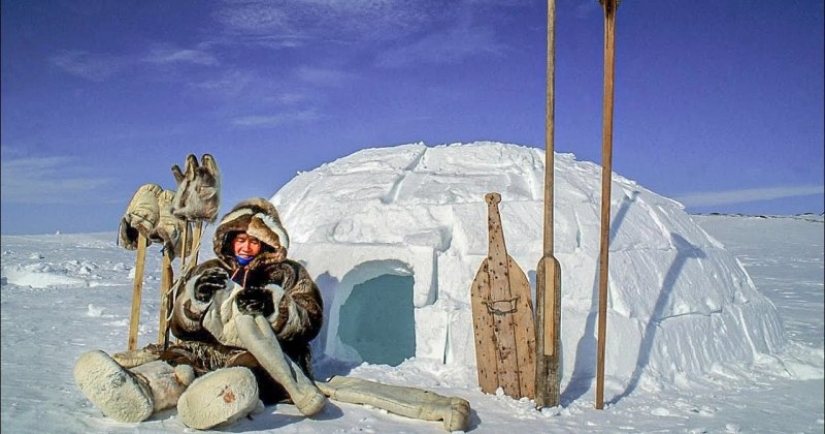
The fact that Eskimos live in an igloo, most of us have heard in school. This is a domed house made of snow bricks, the name of which translates from the Eskimo language simply – "winter housing". Eskimos build an igloo in winter, however, in the regions where they live, this time lasts most of the year.
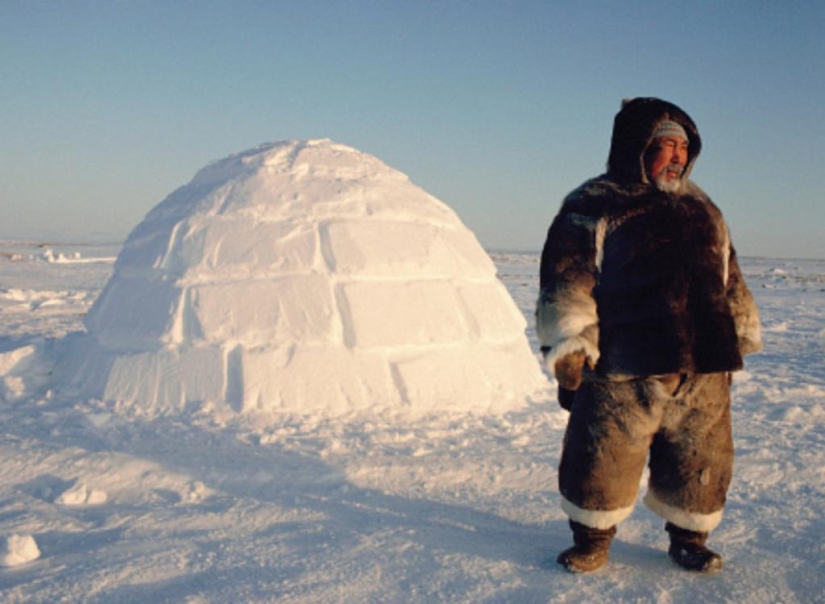
Many believe that the igloo is built of snow and ice. This is not so, because the northern builders have only snow at their disposal. At the same time, snow is not suitable for everyone – Eskimos distinguish its different types well and unmistakably choose the most suitable one. For the construction of an igloo, only the snow on which a clear footprint remains is taken.
The igloo is built of snow bricks-blocks that are not molded, but are cut with a special "snow knife". Since the snow house is round in plan and has a domed shape, it is quite clear that the blocks must have a special shape. Erect the needle in a spiral, starting with small but wide blocks. Each element rests on the blocks of the lower row at three points.
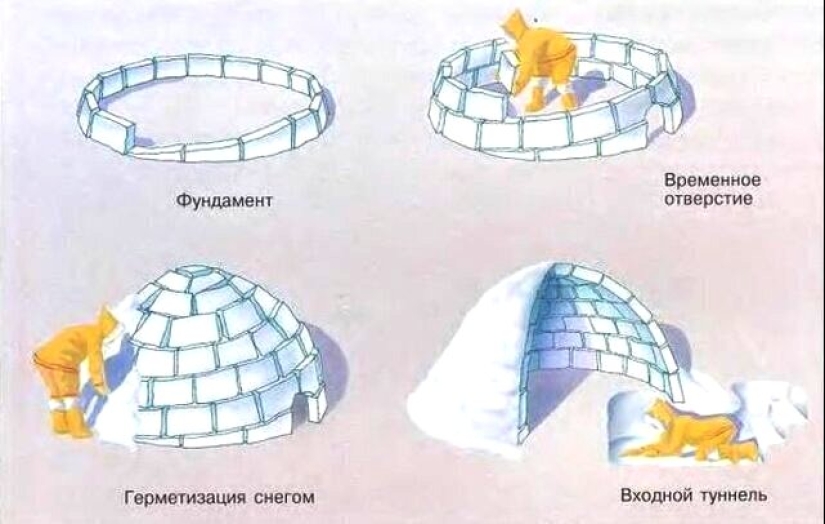
The seams between the blocks are sealed with snow by the Eskimos, so the walls of the igloo look monolithic and are not blown by the wind. The floor of the "winter housing" is below the snow level – this is an important condition for keeping the heat inside. The entrance to the needle is made in the form of a tunnel starting in the floor. If the snow level is small, then the entrance corridor, as well as the walls of the igloo, is made up of blocks of snow.
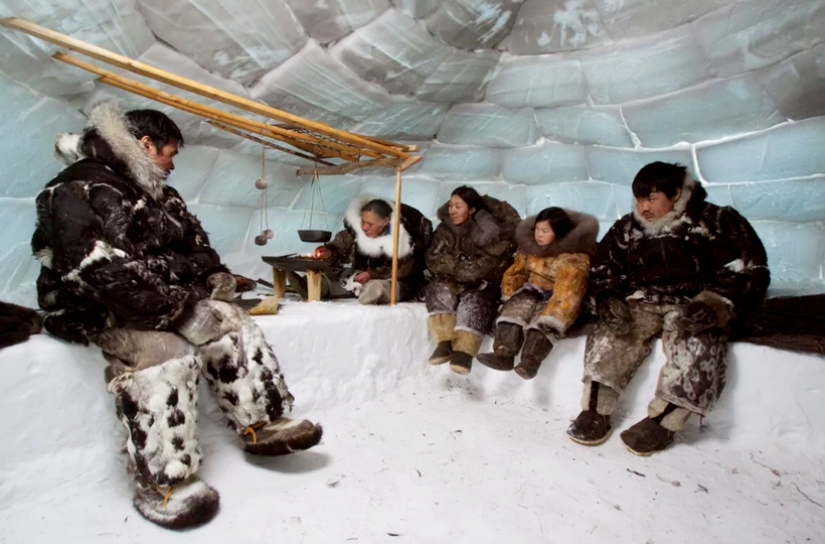
Eskimos are taught to build an igloo in childhood, so adult residents of the north of Canada know this art perfectly. Usually, the construction of housing designed for 2-3 people takes no more than an hour. Certain standards developed over the centuries are also observed during construction.
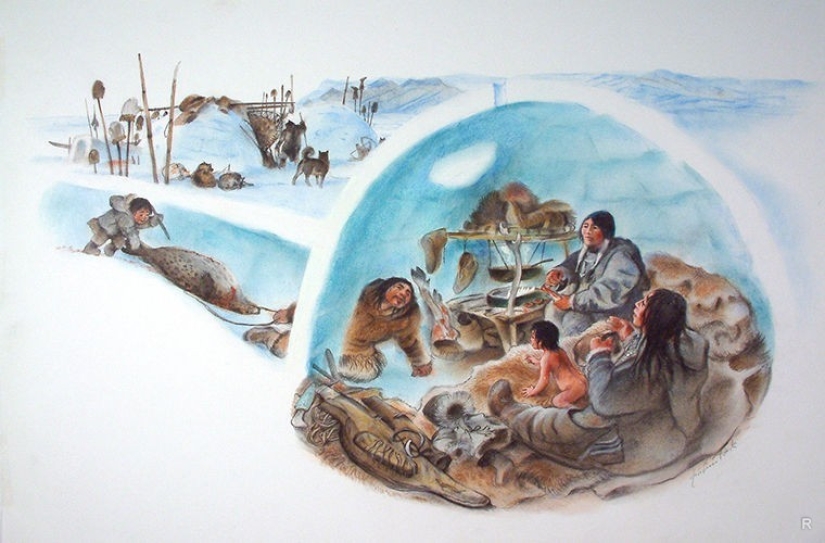
An igloo with a diameter of 2.7 meters is being built for one person, about 3 meters for two, 3.4 meters for three. The size of the igloo takes into account not only the space for life. The diameter is important from the point of view of heat preservation and air circulation. The ability to erect an igloo is vital for people living in the vast expanses of snow. In the event of a sudden snowstorm, an Eskimo can make a shelter for himself wherever the bad weather catches him.
Igloo is much more suitable for the conditions of the Far North than tents and even insulated yurts. Therefore, many researchers of the North have adopted their art from indigenous peoples. Canadian researcher Villalmur Stefansson in 1914 published the book "The Great Sledge Way", in which he also told about the construction of an igloo. The traveler described entire villages of large and small buildings connected by passages.
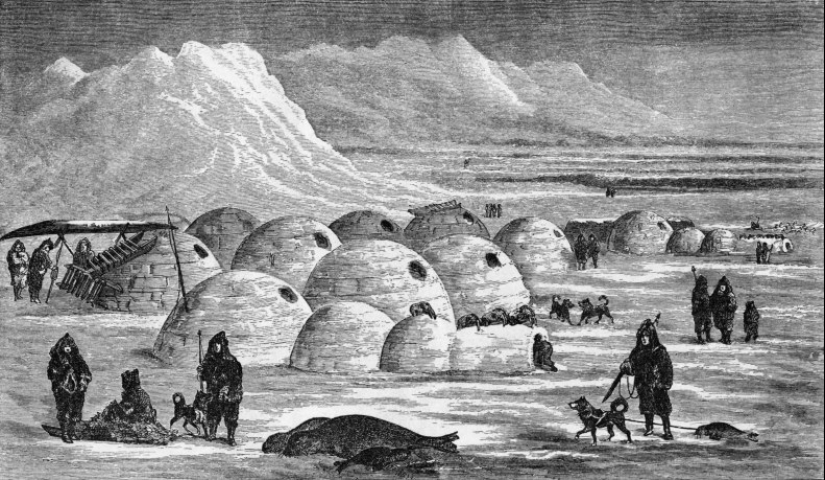
Eskimos cover the floors of the igloo with skins, and sometimes decorate the walls with them. Lighting and heating are provided by bowls with burning fat. Everyone who has been to the igloo is surprised to note that it is comfortable inside. The heat from the bowls and the breath of people melts the snow on the surface of the walls and it is covered with ice. Thanks to him, a dry microclimate is preserved in the igloo. The stronger the frost outside– the more you can heat the air inside.
Recent articles

Twitter user @FactBuffet collects interesting facts about everything. Today we bring to your attention another series of facts that ...

Aomori Prefecture in the north of the Japanese island of Honshu is an agricultural region famous for its delicious apples. In ...

Imagine a baby vampire or a tiny zombie with glass eyes ... An artist from the USA Bean Shanine specializes in creating such ...